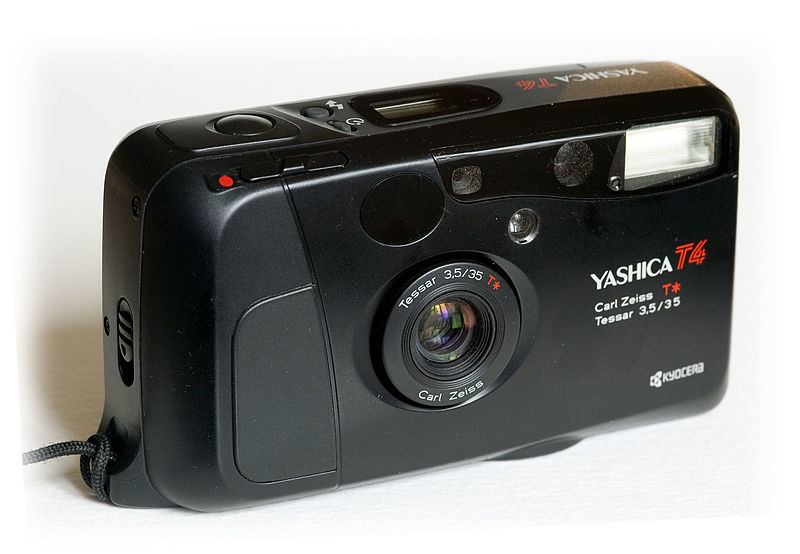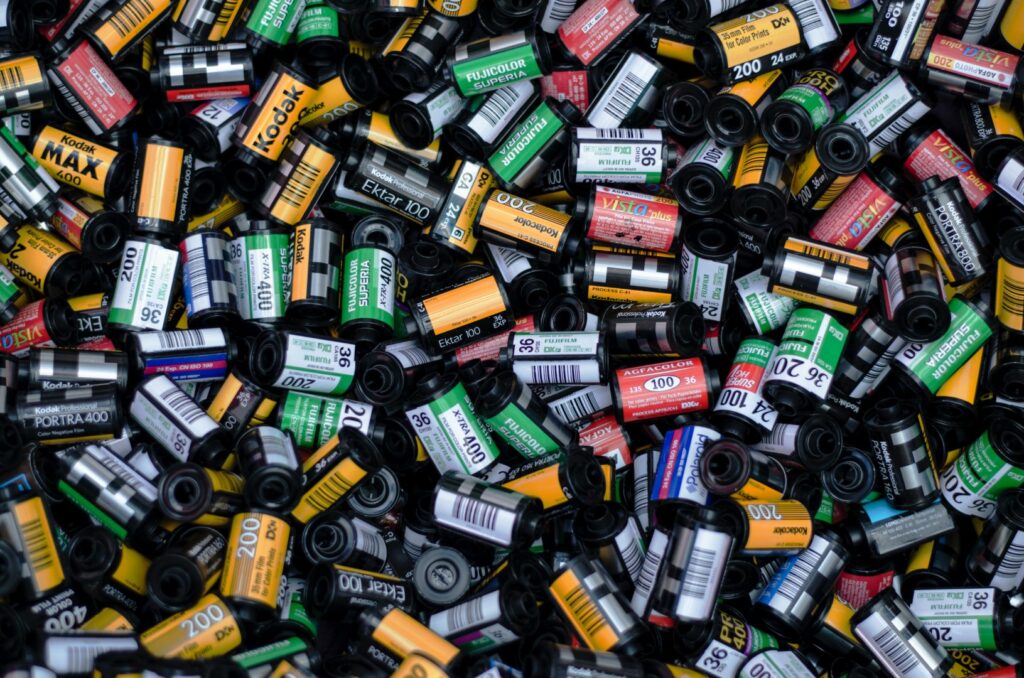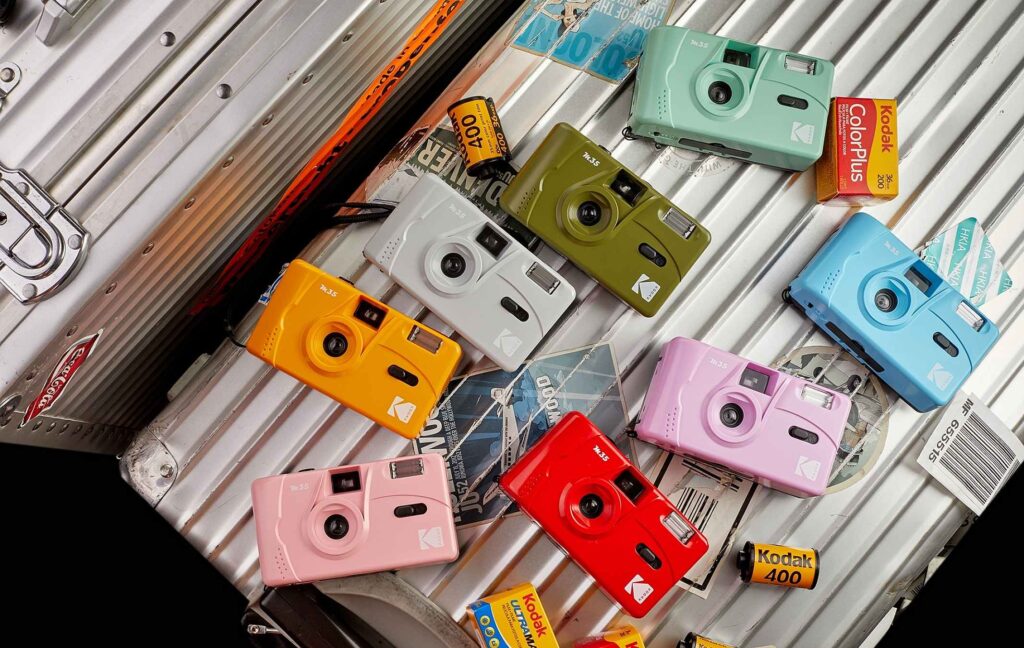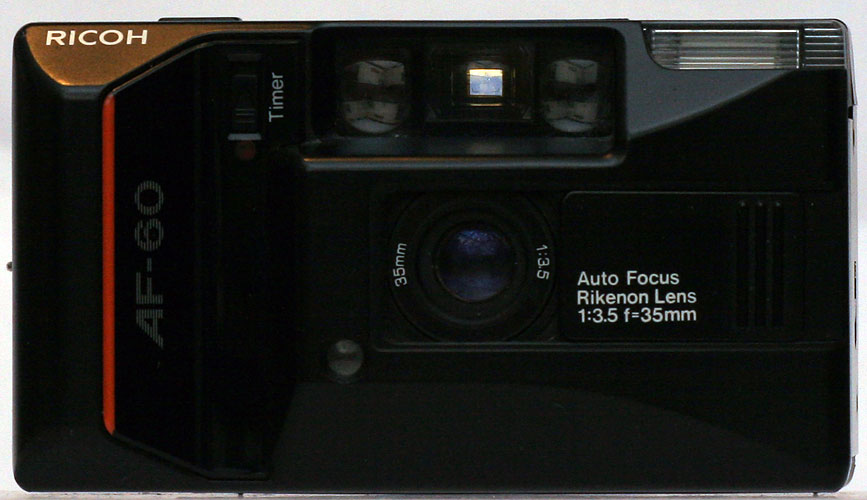Welcome to our detailed guide on selecting the optimal film for your Yashica T4. Released in the 1990s, the Yashica T4 has been a consistent choice among both budding and experienced photographers for its straightforward operation and reliable output.
The Yashica T4, renowned for its compact and durable design, has made a significant mark in the field of point-and-shoot cameras. It is equipped with a sharp, high-quality Carl Zeiss Tessar 35mm f/3.5 lens, capable of producing clear and detailed images. This model also features automatic operations that enhance user experience and output, like an autofocus system that helps capture sharp photos consistently, and an auto-exposure feature that optimally adjusts the camera’s aperture and shutter speed according to the lighting conditions.
Another notable feature of the Yashica T4 is the DX code reader, which automatically recognizes the film’s ISO speed, making it even more user-friendly, especially for beginners. This automatic recognition ensures you’re always shooting at the correct exposure without the need for manual ISO setting adjustments.
However, the full potential of your Yashica T4 can only be harnessed with the right film. That’s why this guide has been crafted – to help you understand the intricacies of different film types, their suitability for various photographic situations, and how to pair them with your Yashica T4 to get the best possible results. From exploring different film stocks to understanding the relevance of film speed and the aesthetic qualities each film type can impart, this guide will navigate you through it all. Let’s dive in.
Understanding Flim Sizes and the Yashica T4
Film size is one of the primary considerations when diving into film photography, as it greatly influences the final look of your photos. Different film sizes offer varying levels of detail, grain structure, and overall aesthetic. The two most common film sizes are 35mm and 120 or medium format. The 35mm film, also known as 135 format, is the most widely used and readily available film size. It’s a favorite among photographers due to its compact size, affordability, and versatility. The images captured on 35mm film typically have a unique grain structure, adding a characteristic charm and vintage feel to the photographs.
On the other hand, 120 film, or medium format, is larger in size and produces negatives that are typically more detailed and sharper with less visible grain. However, this increased image quality comes at the cost of convenience and affordability. Medium format film is not as widely available as 35mm, can be more difficult to handle, and typically yields fewer images per roll. Now, where does the Yashica T4 fit in this discussion? The Yashica T4 is designed to work with 35mm film, capitalizing on its availability and the practicality it offers. The built-in DX code reader automatically recognizes the ISO speed of the 35mm film, further simplifying its use.
Although the camera does not offer the option to switch to other film formats, it doesn’t limit the possibilities. The vast selection of 35mm films available in the market, including black and white, color negatives, and slide films, ensures that photographers can achieve a wide range of aesthetic effects. Whether you’re shooting portraits, landscapes, or everyday moments, there is a 35mm film out there that will help your Yashica T4 deliver impressive results.
Exploring the Different Types of Film Stocks
The world of film photography is rich with variety, each type of film offering unique characteristics that can dramatically affect your final image. In this section, we’ll delve into three main types: Black and white film, color negative film, and slide film.
Black and White Film
Black and white film is a classic choice, cherished for its timeless aesthetic and ability to emphasize textures, shapes, and tones. It allows photographers to focus on the light and composition of the scene without the distraction of color. The tonal gradation and grain of black and white film can lend a dramatic and emotional feel to your images.
The main disadvantage is, of course, the lack of color. This might not be ideal for subjects or scenes where color plays a critical role. Additionally, black and white film requires different chemicals for development compared to color film.
When paired with the Yashica T4, black and white film can produce outstanding results. The sharpness of the Carl Zeiss Tessar lens lends itself well to the monochromatic palette, capturing rich details and textures. Widely available and generally affordable, black and white film is a fantastic option for those wanting to explore a more classic and artistic side of photography with their Yashica T4.
Color Negative Film
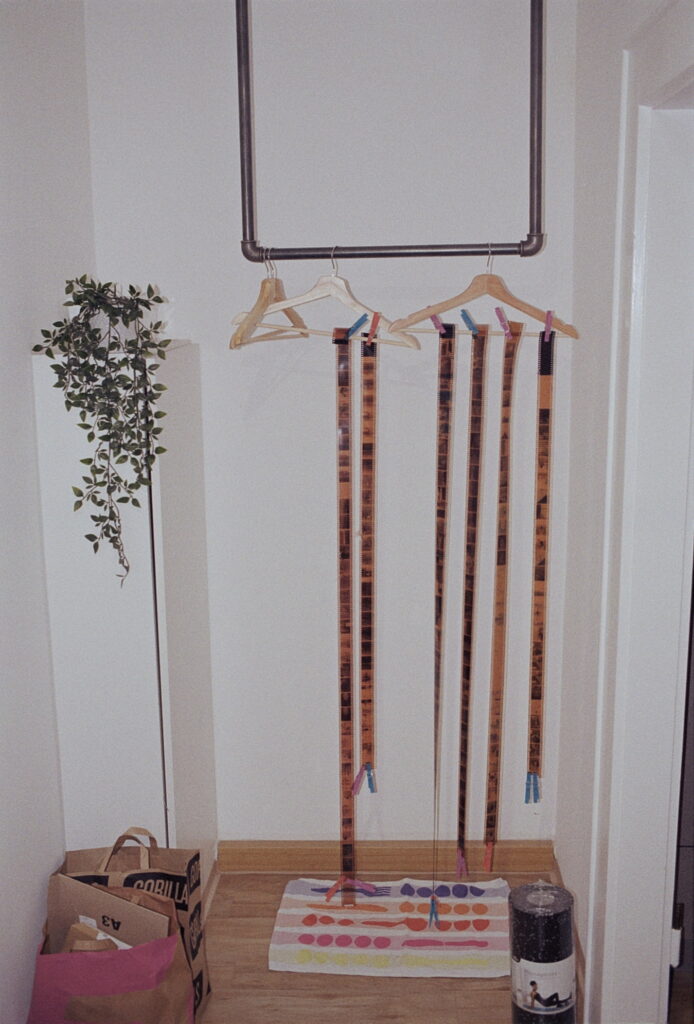
Color negative film is probably the most commonly used film type. It provides a wide range of colors and tones, making it suitable for almost any situation, whether it’s capturing vibrant landscapes, candid moments, or detailed portraits. Color negatives are also quite forgiving in terms of exposure, making them a great choice for beginners.
The disadvantage comes in the form of additional steps in processing to convert the negative into a viewable positive image. However, this is generally handled by the lab if you choose to get your film developed professionally.
With the Yashica T4, color negative film can truly shine. The camera’s auto-exposure and auto-focus features ensure consistently well-exposed and sharp images. Combined with the range and flexibility of color negative film, the T4 can produce stunning, vibrant photographs full of life and depth.
Slide Film
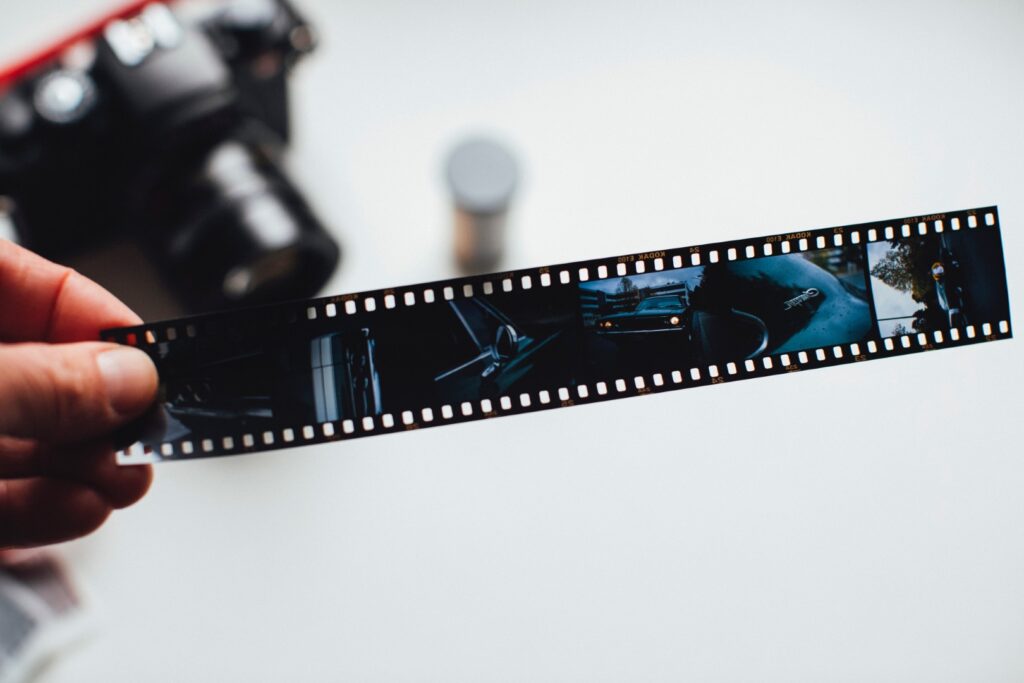
Slide film, also known as reversal or transparency film, produces a positive image on the film strip. The result is vibrant, highly saturated colors and strong contrast, making it an excellent choice for landscape and nature photography.
However, slide film is less forgiving with exposure mistakes compared to color negatives, requiring precise metering for optimal results. It’s also generally more expensive and less widely available than other film types.
When used with the Yashica T4, slide film can yield striking, vivid images. However, because of the T4’s lack of manual controls, getting accurate exposures with slide film can be more challenging. It’s best suited for those with a good understanding of lighting conditions and exposure principles. Despite the challenge, the reward of successfully captured slide film images on a Yashica T4 can be breathtakingly beautiful.
Key Considerations When Choosing a Film for Your Yashica T4
Choosing the right film for your Yashica T4 is not just about picking between black and white, color negative, or slide film. There are other important considerations such as film speed, aesthetic qualities, and the process of developing and scanning your film.
Film Speed
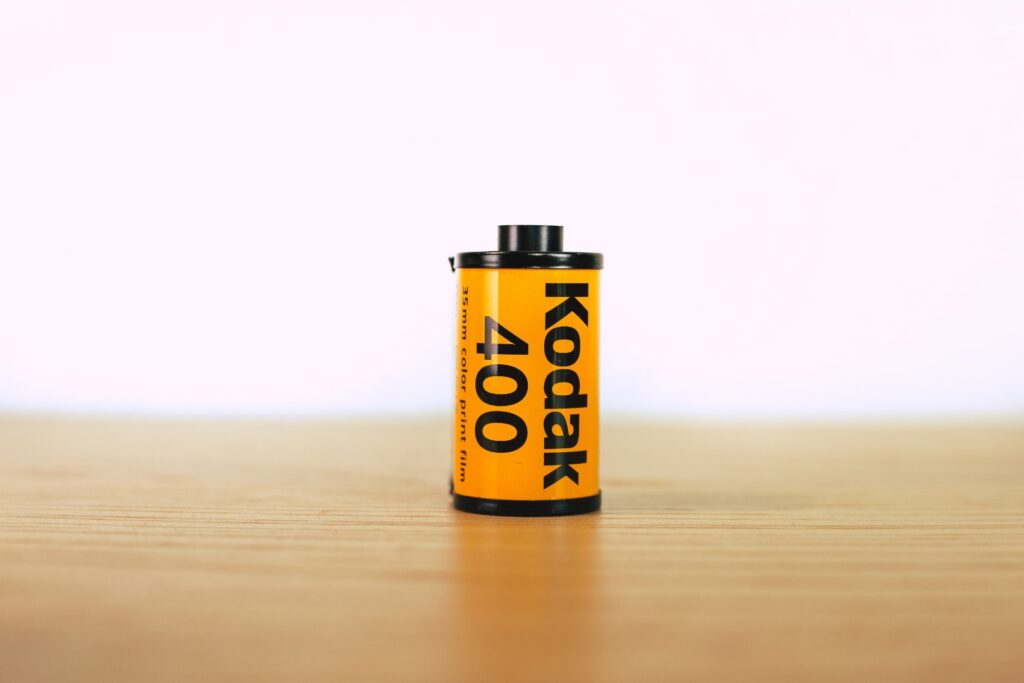
Film speed, measured in ISO, is a measure of the film’s sensitivity to light. A low ISO film (e.g., ISO 100 or 200) is less sensitive to light and produces finer grain, resulting in a cleaner and sharper image. However, it requires more light for a proper exposure, making it ideal for bright, outdoor shooting conditions.
On the contrary, high ISO film (e.g., ISO 800 or 1600) is more sensitive to light and can capture images in darker environments without the need for a flash or a tripod. The trade-off is that high ISO films produce more visible grain, which can either be seen as a drawback or an aesthetic choice, depending on your creative vision.
The Yashica T4 is equipped with a DX code reader that can automatically detect the ISO of your film from 50 to 3200. This feature allows you to experiment with a wide range of film speeds. For everyday use, an ISO 400 film is often a good choice as it offers a balance between light sensitivity and grain.
Aesthetic Qualities of the Film Stock
Different films come with distinct aesthetic qualities – they differ in grain structure, color rendition, contrast, and more. Some films are known for their sharp, vibrant colors and fine grain, while others are cherished for their soft tones and visible grain.
The film’s aesthetic qualities can greatly influence the mood and feel of your images, so it’s crucial to select a film that aligns with your creative vision. Experimenting with different films can be an exciting way to discover the unique styles each film can lend to your photos taken with the Yashica T4.
Developing and Scanning Film
After shooting, your film needs to be developed and then scanned or printed to convert the captured images into a viewable format. Developing can be done at home if you’re up for the challenge and willing to invest in the necessary equipment and chemicals. However, most people opt to send their films to a professional lab due to the convenience and consistent results it offers.
Scanning film is the next step if you want to have digital copies of your photos. You can purchase a film scanner and do it yourself, or most labs offer scanning services for an additional fee.
The choice between home development/scanning and professional lab services depends on your budget, time, and the level of control you desire over the process. While developing and scanning at home might seem daunting at first, many film photographers find the process rewarding and an integral part of the analog photography experience.
Top Film Choices for the Yashica T4
Choosing the right film for your Yashica T4 can greatly enhance your photography experience and the end results. Given the T4’s popularity for street, travel, and candid photography, we’ve picked a couple of films that excel in these genres and complement the camera’s capabilities.
Color Films
In the color films category, three stand out for their compatibility with the Yashica T4’s features and performance:
Kodak Portra 400
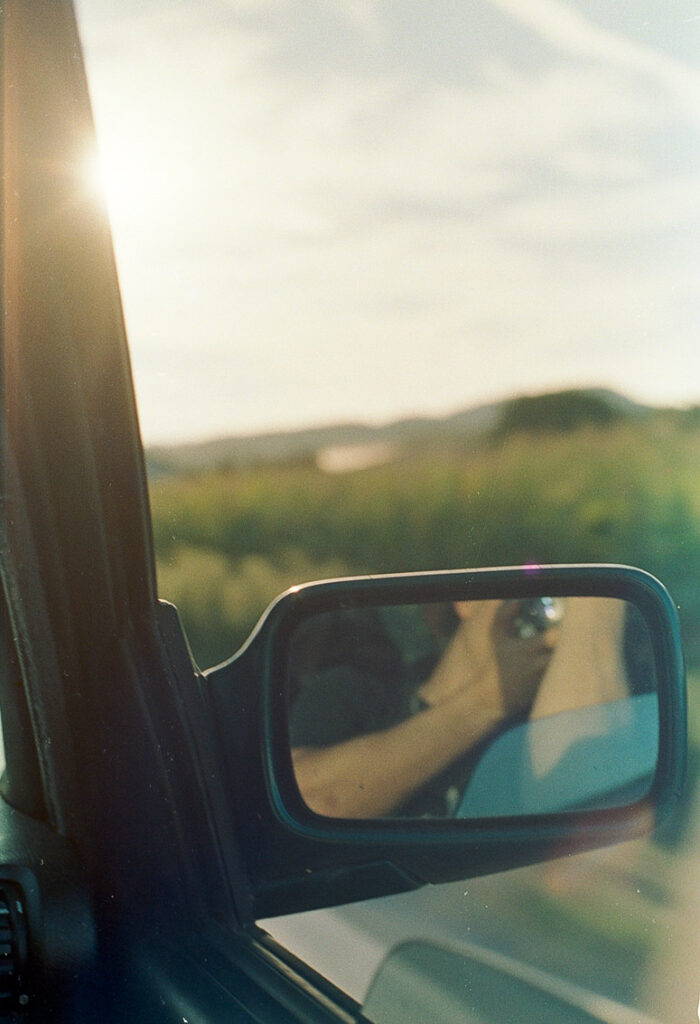
Kodak Portra 400 is a highly versatile color negative film praised for its fine grain, exceptional sharpness, and balanced color palette. Whether you’re capturing sun-drenched landscapes or intimate portraits, Portra 400 delivers stunning results with natural skin tones and a wide dynamic range. Its ISO 400 speed makes it a flexible choice for varying light conditions. The Yashica T4’s sharp Carl Zeiss lens, coupled with Portra 400, can yield images with impressive detail and tonality. Check current prices here.
Fujifilm Pro 400H
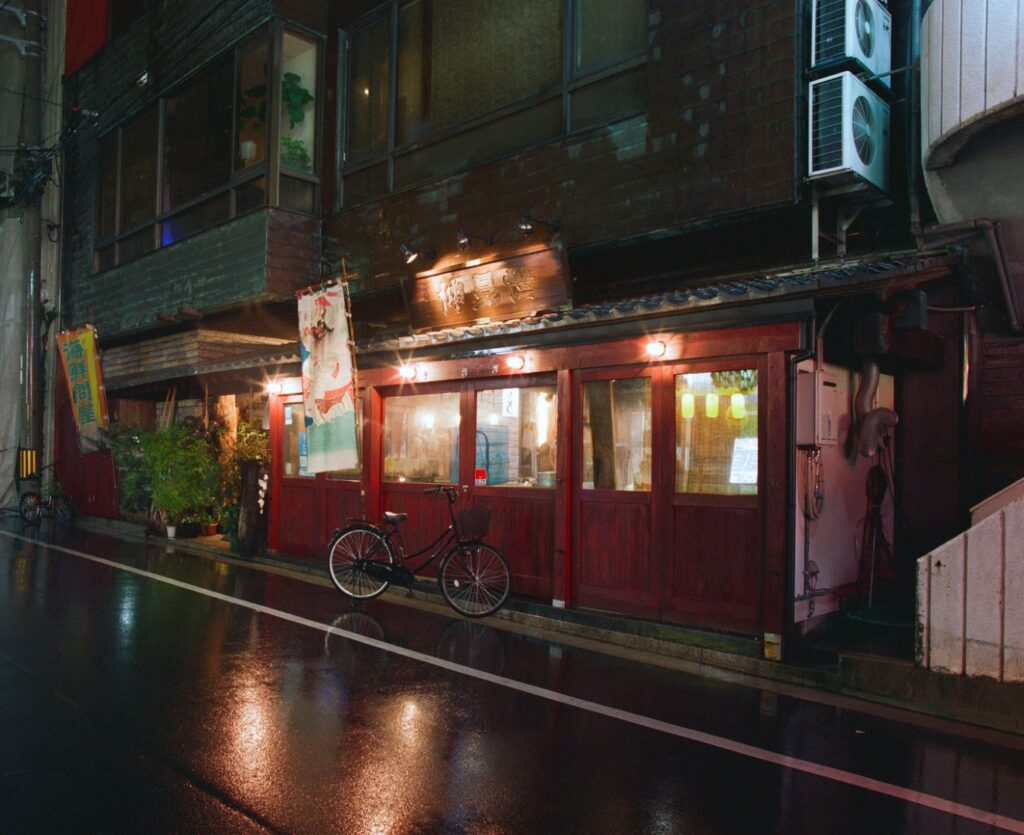
Fujifilm Pro 400H is another color film known for its accurate color reproduction, fine grain, and wide exposure latitude. It renders soft, pastel-like colors and smooth skin tones, making it a popular choice for portraits and wedding photography. However, its versatility extends to a variety of shooting situations including travel and street photography. Its ISO 400 speed makes it adaptable to different lighting conditions, and the Yashica T4’s automatic exposure feature ensures well-exposed photos even in tricky lighting situations. Check current prices here.
Kodak Ektar 100
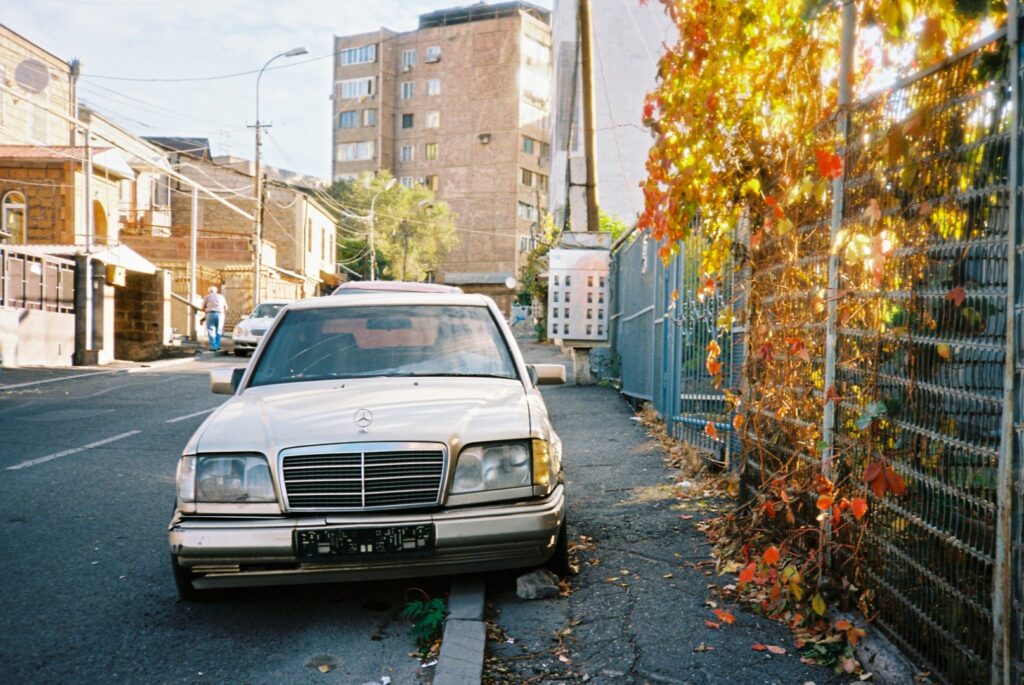
Kodak Ektar 100 is known as one of the finest-grain color negative films available, offering high saturation and vivid colors. It excels in well-lit, outdoor scenarios, making it ideal for landscapes and travel photography. It can capture the smallest of details and the most vibrant colors, producing crisp, lively images. When used with the Yashica T4, Ektar 100 can yield stunning, detailed photographs with a pop of color. However, its lower speed (ISO 100) means it performs best in bright lighting conditions. Check current prices here.
Top Black and White Films
Here are three high-performing black and white films that work well with this camera.
Kodak Tri-X 400
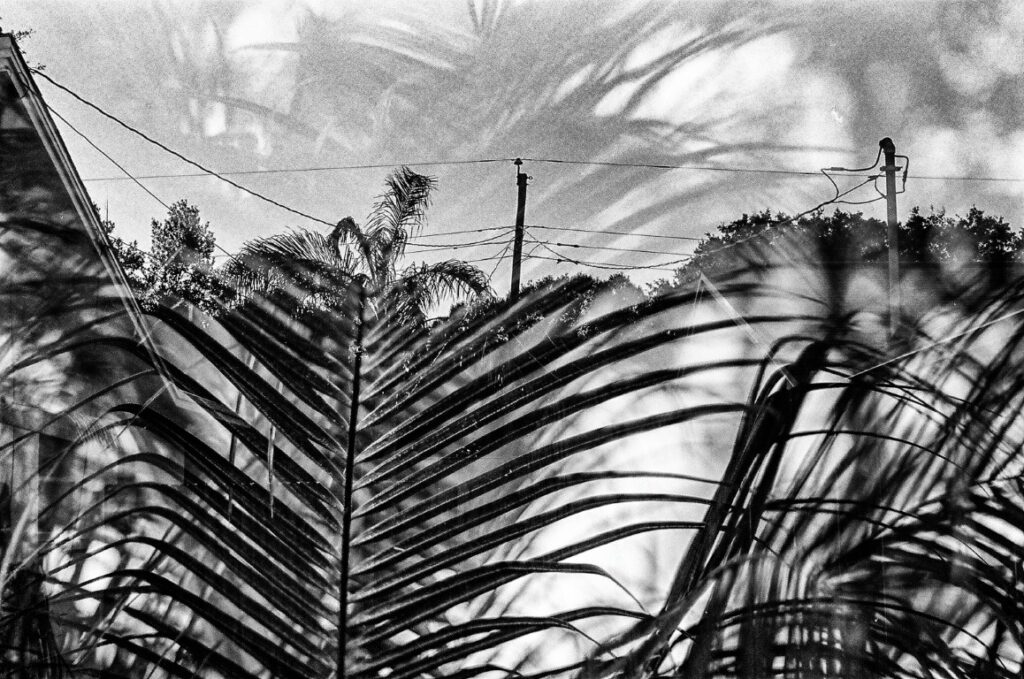
Kodak Tri-X 400 is arguably one of the most popular black and white films in the market. With its distinctive grain and rich tonality, Tri-X 400 is cherished by street and documentary photographers for its ability to add depth and character to the images. The film’s ISO 400 speed makes it versatile enough for various lighting situations. In conjunction with the Yashica T4’s superb lens, Tri-X 400 can yield high-contrast, impactful black and white images. Check current prices here.
Ilford HP5 Plus 400
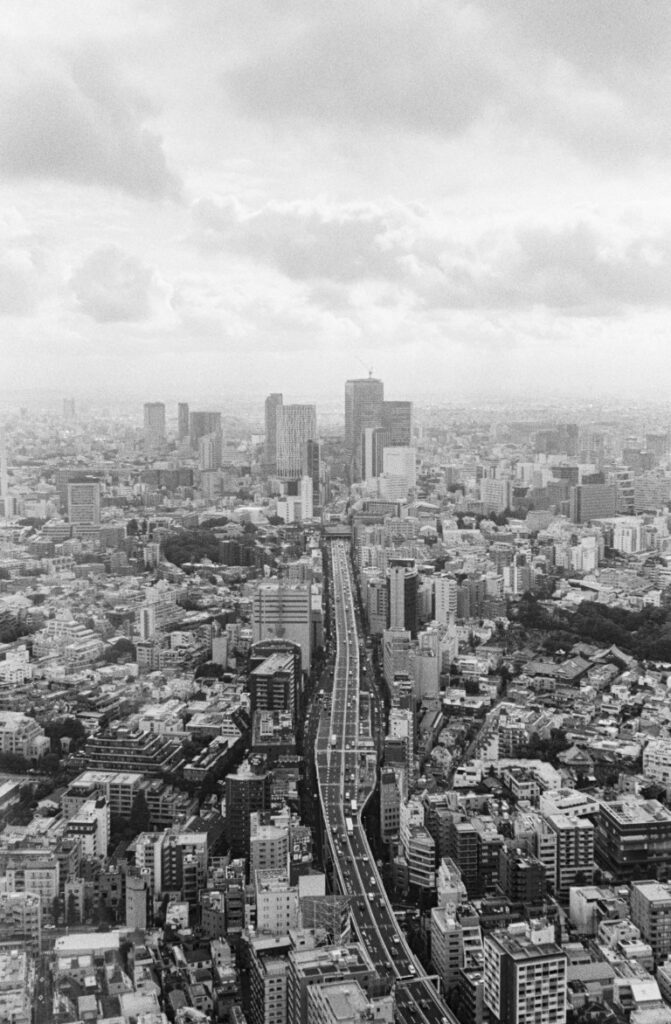
Ilford HP5 Plus 400 is another versatile and well-regarded black and white film. It offers a wide exposure latitude, making it forgiving and easy to work with. HP5 Plus 400 produces images with fine grain and a good balance of contrast, which can be further manipulated in the development process for a more custom look. Given its versatility, it’s suitable for a variety of genres including street, portrait, and landscape photography when paired with your Yashica T4. Check current prices here.
Fomapan 100 Classic
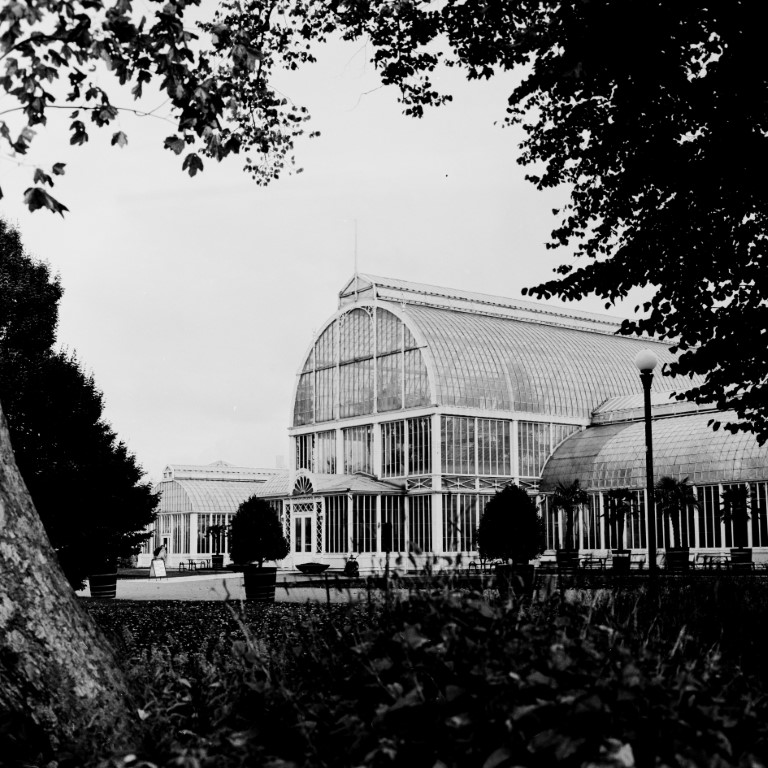
Foma Fomapan 100 Classic is an affordable black and white film that delivers high-resolution, sharp, and contrasty images. It has a relatively low ISO of 100, meaning it performs best in bright lighting conditions. This film is known for its classic, vintage look characterized by a coarser grain structure. If you aim to capture the timeless charm of black and white photography with your Yashica T4, Fomapan 100 Classic is worth considering. It’s particularly suited to landscape and still life photography due to its high sharpness and rich grayscale rendition. Check current prices here.
Top Slide Film Choices
If you’re seeking vibrant colors and high contrast in your photos, slide film could be the perfect match for your Yashica T4. Here are two slide films that can help you produce stunning results.
Fujifilm Velvia 50
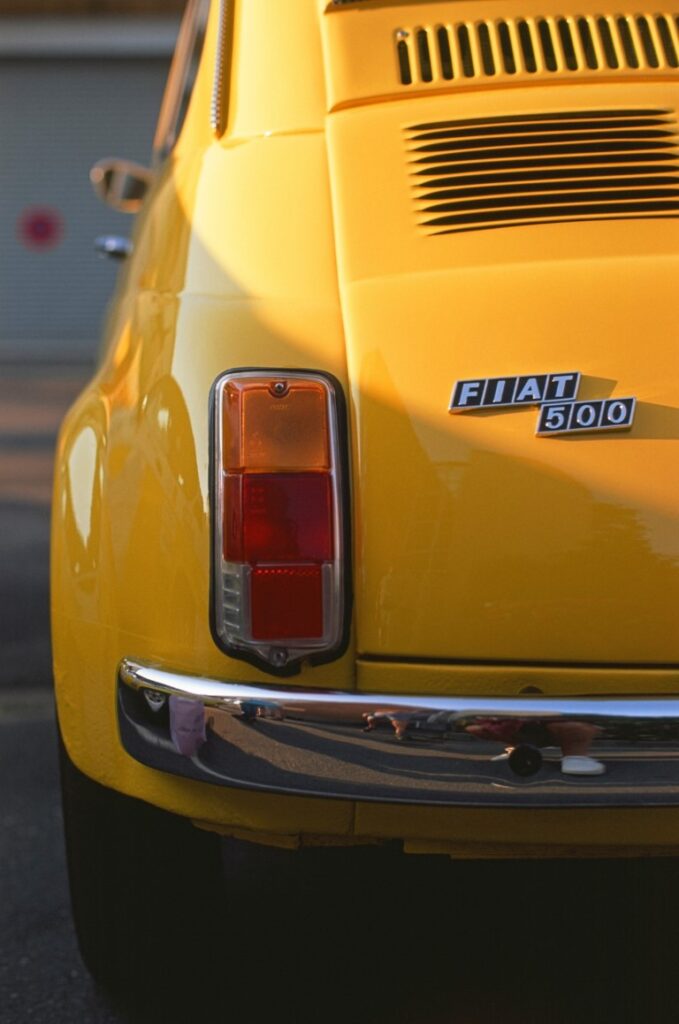
Fujifilm Velvia 50 is renowned for its extremely high resolution and vibrant saturation, making it an ideal choice for landscape and nature photography. It provides exceptionally fine grain, high sharpness, and outstanding color rendition, which can bring your images to life. Its lower ISO rating of 50 requires plenty of light, but rewards you with some of the richest colors a film can offer. The precision of the Yashica T4’s lens can truly exploit Velvia 50’s high resolution, resulting in stunningly detailed images. Check current prices here.
Kodak Ektachrome E100
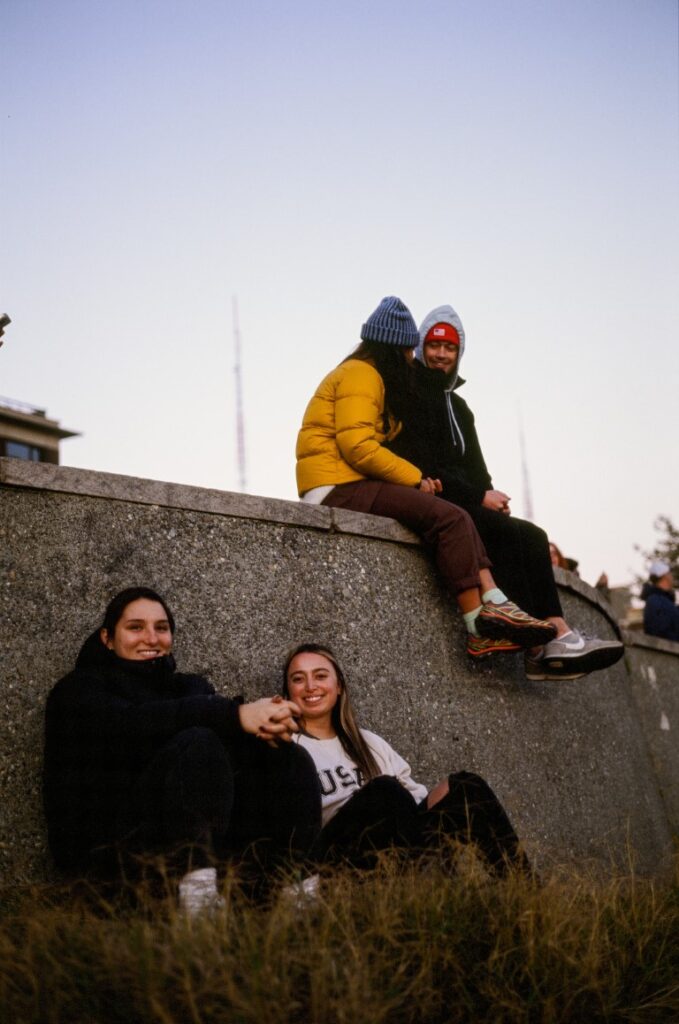
Kodak Ektachrome E100 is a recently reintroduced slide film that has quickly gained favor with film photographers. It offers vibrant but realistic colors, excellent sharpness, and a very fine grain. E100 is known for its clean whites and remarkably neutral tone scale, making it a versatile choice for a variety of shooting situations. The Yashica T4’s automatic exposure function can help ensure correct exposure, which is critical when shooting with slide film like Ektachrome E100. Check current prices here.
Budget-Friendly Film Alternatives for Yashica T4
For those just getting started with film photography or those on a budget, there are several affordable yet high-quality films that pair well with the Yashica T4. Here are a few options:
Kodak ColorPlus 200
Kodak ColorPlus 200 is a budget-friendly color negative film that produces pleasant and natural color reproduction. The film provides a fine grain and good sharpness, making it a reliable choice for everyday shooting scenarios. The ISO 200 speed is versatile for most lighting situations, and the Yashica T4’s automatic features make it easy to get consistently good results with this film. Check current prices here.
Ilford Kentmere 400
If you’re looking for a cost-effective black and white film, Kentmere 400 is a great option. It’s a fast film that delivers a fine grain and good sharpness, and it is well-suited to a broad range of subjects. The film’s broad latitude helps maintain detail in shadow and highlight regions, which is particularly useful when shooting in variable lighting conditions with the Yashica T4. Check current prices here.
Frequently Asked Questions about Using Film in Yashica T4
When it comes to using film with the Yashica T4, certain questions arise more frequently than others. Let’s address some of these common queries.
How to Load Film into the Yashica T4?
Loading film into the Yashica T4 is straightforward. First, open the camera’s back by sliding down the latch located on the side. Next, insert the film canister into the right chamber. Pull the film lead across the back of the camera until the red mark. Now just close the back of the camera and you will hear it automatically forwarding until a “1” shows in the LCD screen. Now you are ready to shoot.
What Type of Battery Does the Yashica T4 Use and How Long Does It Last?
The Yashica T4 uses a 3V lithium CR123A battery. The lifespan of the battery can depend on several factors including the frequency of use, age of the battery, and the conditions in which the camera is used. For more detailed information about the battery life, its care, and replacement, you can refer to our comprehensive guide.
Can the Yashica T4 Handle High ISO Films?
Yes, the Yashica T4 can handle high ISO films. The camera has a built-in DX-code reader that automatically sets the ISO from 50 to 3200. However, keep in mind that higher ISO films are more grainy and can lead to less sharp images, especially in low light conditions.
What Happens If I Use Expired Film with My Yashica T4?
Expired film can lead to unique and unpredictable results. Colors might shift, contrast could be reduced, and additional grain might appear. The overall effect will depend on how the film has been stored and how far past its expiration date it is. It can be a fun experiment, but if consistency and predictability are important for your project, it’s best to use fresh film.
How Does the Yashica T4 Perform with Black and White Films?
The Yashica T4 performs well with both color and black and white films. Its sharp Carl Zeiss lens can capture a wide range of tones and details, which are critical elements in black and white photography. Different black and white films will provide various levels of contrast and grain, allowing you to choose based on the aesthetic you’re aiming for.
What Are the Best Affordable Films for My Yashica T4?
There are several good, affordable films that can be used with the Yashica T4. Kodak ColorPlus 200 and Ilford Kentmere 400, for instance, are cost-effective options that still deliver high-quality results.
Can I Develop Films Shot with Yashica T4 at Home?
Yes, it’s entirely possible to develop films shot with the Yashica T4 at home, provided you have the necessary chemicals and equipment. Developing at home can be a rewarding process that gives you full control over the final look of your images. However, it does require some learning and practice. If you’re just starting out, you might find it easier to have your films developed by a professional lab.

